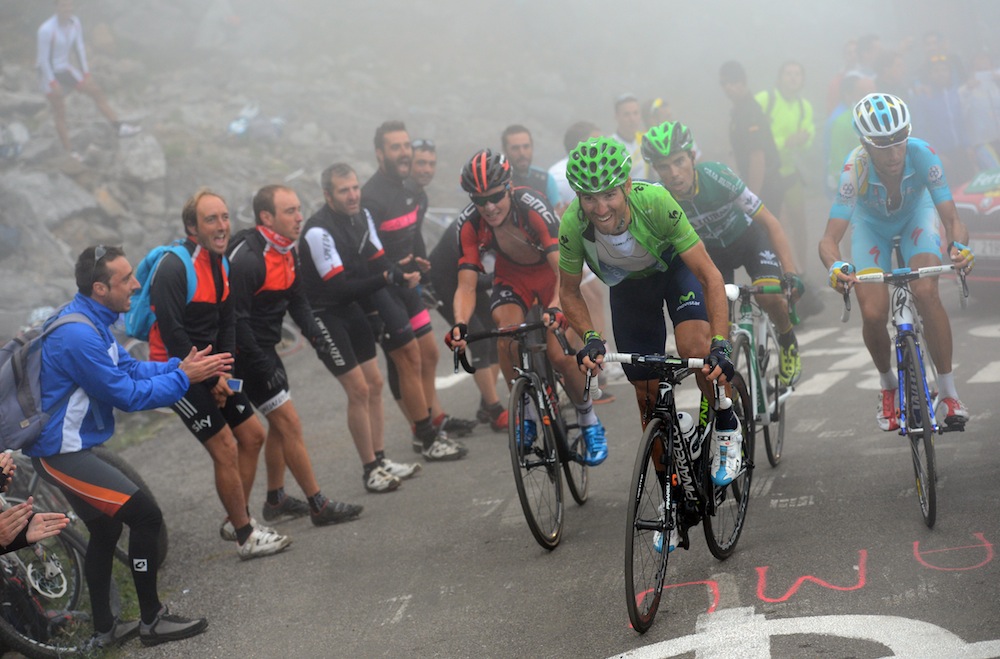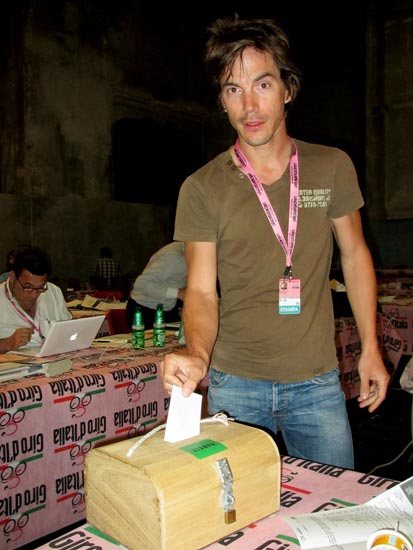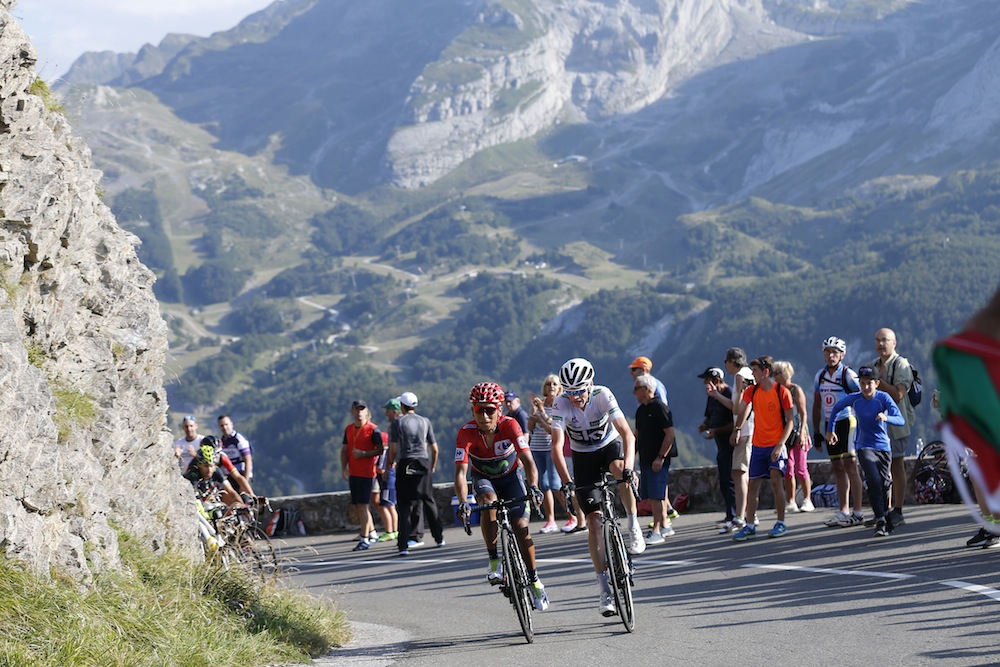Vuelta a España 2017 route: A trip to the Pyrenees and an Angliru finale?
Here's what could be on the cards for the Vuelta a España 2017 route

The 2017 Vuelta a España could see the riders take on the fearsome Angliru climb (Watson)

Planning for the 2017 Vuelta a España route is already underway just days after Nairo Quintana (Movistar) beat Chris Froome (Sky) to win the 2016 title in Madrid. Organiser Unipublic is planning a trip through the Pyrenees and a return to the steep Angliru finish, say local sources.
In the opening week of the 2016 Vuelta, race director Javier Guillén confirmed the long-rumoured start over the French boarder in Nîmes. The race will get rolling on August 19 with a team time trial as it has done for the last seven years.
>>> Giro d’Italia 2017 route: RCS set to reveal Sardinia start for 100th edition
This year when the race started near Ourense, in Galicia, Team Sky won and put Pete Kennaugh in the race leader's red jersey.
After the Vuelta leaves the ancient Roman Empire outpost and the city's famous bullfighting arena, its route is largely unknown. It should cover around 3500 kilometres and loop around Spain before its finish in Madrid.
Locals in Riosa, in Spain's northern Principality of Asturias, are already saying that the Vuelta will return to its famous Alto de L'Angliru.
Mayor Ana Diaz told La Nueva España: "We plan to meet with the organisation of the Vuelta to start negotiations and try to Angliru stage a reality in the 2017 race."
Get The Leadout Newsletter
The latest race content, interviews, features, reviews and expert buying guides, direct to your inbox!
The 12.2km climb averages 10.2% and reaches 23.5%. It's been a popular, but controversial, stomping ground for the Vuelta a España over the last 15 years. In 2002, riders and teams protested due to the conditions made worst by heavy rain. David Millar stopped ahead of the line and handed over his race number.

Photo : Yuzuru SUNADA
When the Vuelta last visited in 2013, it did so without a hitch. Frenchman Kenny Elissonde (FDJ) won and said, "It’s one of the hardest climbs in the mountains."
Unipublic is said to be using the climb for the race's final mountain scene. As with this year after Froome tried to upset Quintana on the Aitana summit finish, the next day, a Sunday, the race should finish in Madrid.
As in recent years, the Vuelta a España should be climb heavy. Following the start in Nîmes, the tour should spend another two days travelling along the flats towards the Pyrenees and the Spanish border.
The organiser could select from a rich menu of summit finishes: Pla de Beret, La Pierre Saint-Martin, Cauterets, Andorra-Arcalís or Formigal, the stage that Quintana used to take 2-43 minutes from Froome.
Like 2003, the route would likely transfer south and spend a rest day, perhaps in the Andalucía region, before restarting.
>>> Tour de France 2017: what we know so far
Already kicked around for the 2016 route, the organiser may visit the Pico de Veleta, which tops out at 3300 metres and is the highest paved road in Europe.
The problem with the area in the Sierra Nevada mountains, southeast of Granada, is the lack of space for the Vuelta's caravan. Instead, it could climb to IRAM Pico Veleta Observatory at 2845 meters, where there is plenty of space near the 30-metre telescope.
If not already in the first week, the organiser could insert a long time trial stage in the south. This would offer a transition and likely shift the race in favour of riders like Froome, before the Vuelta travels north and tackles the rest of its mountains culminating with the Angliru.

Thank you for reading 20 articles this month* Join now for unlimited access
Enjoy your first month for just £1 / $1 / €1
*Read 5 free articles per month without a subscription

Join now for unlimited access
Try first month for just £1 / $1 / €1
Gregor Brown is an experienced cycling journalist, based in Florence, Italy. He has covered races all over the world for over a decade - following the Giro, Tour de France, and every major race since 2006. His love of cycling began with freestyle and BMX, before the 1998 Tour de France led him to a deep appreciation of the road racing season.
-
 Gear up for your best summer of riding – Balfe's Bikes has up to 54% off Bontrager shoes, helmets, lights and much more
Gear up for your best summer of riding – Balfe's Bikes has up to 54% off Bontrager shoes, helmets, lights and much moreSupported It's not just Bontrager, Balfe's has a huge selection of discounted kit from the best cycling brands including Trek, Specialized, Giant and Castelli all with big reductions
By Paul Brett
-
 7-Eleven returns to the peloton for one day only at Liège-Bastogne-Liège
7-Eleven returns to the peloton for one day only at Liège-Bastogne-LiègeUno-X Mobility to rebrand as 7-Eleven for Sunday's Monument to pay tribute to iconic American team from the 1980s
By Tom Thewlis